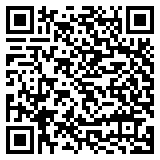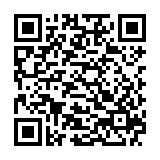If you’ve sent a Slack message to your colleagues this week, had an online meeting, or answered a business email, it means you’ve used some aspects of communication technology. New software tools and cutting-edge gadgets have already changed the way we run our personal and professional daily errands. And it seems we’re only at the dawn of the age of comm-tech. So, let’s see what’s in it for businesspeople.
What Is Communication Technology?
Communication technology refers to any type of computer program, messaging system, or software with which people can exchange information. State-of-the-art communication technology tools enhance both personal and business communication. Effective communication tools are simple, smooth, and reliable, with their users at the center. What’s more, companies developing new solutions or maintaining the existing, successful ones must be aware that the global availability of their comm-tech tools also matters a lot.
How Has Technology Improved Communication?
Technology has improved communication in countless ways. This isn’t a historical overview of communication technology, so we can’t cover the entire timeline. But let’s just remember that the electric telegraph was invented in 1843. The fax machine became a household (and office-hold) name in the 1980s, when it changed the face of global business communication. You could send a business letter from Chile to Japan in a matter of seconds.
But the advent of the Internet in the 1990s was the pivotal point, after which the entire world connected like never before. Still, in 1995, they didn’t know how intertwined we all would become by 2025. At this point, both businesspeople and ordinary people can exchange messages through social media (Facebook, Instagram, LinkedIn, etc.), regular and private messaging apps, Slack, Microsoft Teams, and dozens of other practical tools. And the AI revolution has just begun, with countless ways in which it will improve our communication skills and possibilities in the time ahead.
Communication Technology Examples
Communication technology goes beyond the exchange of people’s thoughts and documents. A website is also an example of communication powered by technology, and so is the blog on that same website. Vlog – blog’s next of kin – has also become a powerful communication asset, especially in some industries (tourism, travel, and hospitality industry). Likewise, if a company starts a podcast – or a podcast turns into a business endeavor, such as Joe Rogan’s podcast – that is also a clear example of tech-enhanced communication.
Online meetings held via Google Meet or Microsoft Teams, or business communication via Slack, as well as the use of project management tools, are all examples of tech-based business communication.
Also, communication technology doesn’t refer only to software. Cutting-edge wearable gadgets, cellphones, laptops, tablets, and other similar devices are the gateways of communication technology.
Last but not least, let’s not forget the forefather of this phenomenon: the phone. Even though landline phones and cellphones (when used for calling or texting) typically don’t include cross-border communication, they’re still vital means of business communication.
Interpreting App Systems
In the examples above, we’ve highlighted how much contemporary communication depends on technology. But conveying a message isn’t always enough. Many times, this message requires proper translation and adaptation. As a matter of fact, the way a business treats external communication in different languages – such as multilingual support – can influence its lead generation rates.
What’s more, if a company website doesn’t allow automatic translation, it might not reach the desired number of users. But the story doesn’t end only in written online communication. Even though this is the age in which AI tools are showing their potential, people’s communication skills are still valuable. For instance, if a business meeting is held between two parties that don’t speak each other’s languages, they often decide to communicate in English. Even with the rise of AI voice agents that can assist with real-time translation, human-to-human communication remains essential for clarity and trust. However, sometimes people don’t feel comfortable speaking in another language. This is where interpreting becomes important. An interpreter has the power to bring two parties closer, helping them overcome or avoid potential misunderstandings.
In the context of online business communication, video remote interpreting, also known as VRI, is more important than ever before. Such a service can bridge the gap if business partners or potential collaborators can’t find common ground on their own. Also, businesspeople can now use an interpreting app that helps them understand one another more clearly. Some apps, like Google Translate, work better for written communication, but speech-to-text tools are becoming more advanced, as well.
Business Communication: What Comes Next
The fast growth of artificial intelligence and language-learning models is, without any doubt, the key trend that will shape the field of communication technology in the time ahead. Features like the direct translation of verbal and oral communication will get even more advanced. Some related options, such as speech-to-text tools for meeting minutes, have already changed the way we hold meetings. The future improvements will most likely keep working for us, making our business life a bit easier.

Pavle has a decade and a half of linguistic experience, first as an ESL teacher, then as a translator and interpreter. In the last third of his career quest so far, he has turned to content marketing, as the most exciting branch of applied linguistics.
Having worked as a content specialist and editor while following the latest linguistic and tech trends, he has specialised in bringing the current affairs in the lingtech sector to the spotlight.
When he’s not crafting his briefs and drafts, and writing his stuff, he likes to pluck a chord or two on his old guitar, or just go to a pub quiz; a father of three, a husband of one.




0 Comments